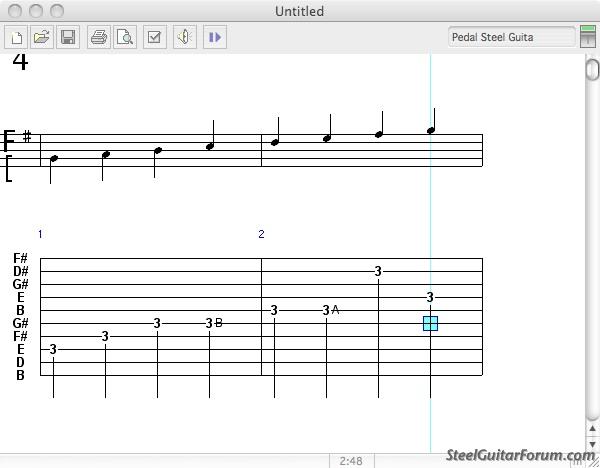I think Mitch Mitchell was the original bass player in the Jimi Hendrix Experience.
The older we get, the memories seem better, but not necessarily clearer....
|
The Steel Guitar Forum Store
Visit Our Catalog for Strings, Instruction, Music and Accessories |
Click Here to Send a Donation
Steel Guitar Links |
Moderator: Dave Mudgett
On the fiddle you can read Johann Brahm's Hungarian Dance No. 5 (excuse me, violin, not fiddle:) or Charlie Daniel's South's Gonna Do It Again (if you can find the sheet) or Jeff Beck's Cause We Ended As Lovers (if you can find the sheet nusic) and it's a language that's developed over hundreds of years. It's got difficulties and something may soon develop to improve the situation, but FACE and Every Good Boy Does Fine along with time signatures, key signatures, and notation timing gives a read that works with any instrument - you can hear the music once you learn to read it and if you play multiple instruments, it works in your ear with them all. I've looked at tabs and in frustration, just gone ahead and played by ear, and done good - but there's something about so many strings on the steel crossing octaves that makes it a little hard to write in a clef. And example-wise, on violin your 1 and 3 finger are always lines and open string, 2 and 4 finger are always spaces and you can develop a mental-visual shorthand that works fast enough to let you combine the timing/rhythm with the intonation as quickly (with luck) as if you already knew the tune. In short, I'm agreeing that I wish there was an equivalent library of notation for the pedal steel as there is in tab. The first impression is that tab would be playable, but it would be faster to read notes with a well-known translation (as with the fiddle - pardon, violin) to fingers. However, the variation available with so many copedents makes the pedal steel so flexible but more difficult to use standard musical notation - maybe somebody's got that figured out. Anyway, agreeing again, I just find tab lacking. Apologies for the length. I guess I'm hoping somebody's figured that out.Mike Perlowin wrote:should abandon it and learn how to read music.
This reliance on tab and refusal to learn to read music is holding our instrument back, and keeping us isolated from the rest of the musical world.
Although I like to play by ear, I found this useful, and free no less!Bo Legg wrote:...something really useful like “boys and girls please follow the bouncing ball” tab...
Yeah, me. And I wrote this article that explains it all.Alfred Ewell wrote: ...the variation available with so many copedents makes the pedal steel so flexible but more difficult to use standard musical notation - maybe somebody's got that figured out.
My article tells you how to figure that out.Bo Legg wrote:... notation only tells you what note but it doesn't tell you where on the neck you want the note played.
Beats me, but then again; I haven't really played by standard notation for nearly 40 years, so will have to practice speed-reading for a while if I am to play somewhat unknown sheet music directly. As it is now I have to spend hours studying notation before being able to play anything new and ever so slightly complex, my style(s).Mike Perlowin wrote:Every song ever written is available somewhere written out in standard notation. Why would anybody want to cut themselves off from that?
George, I can't sight read (look at a piece of music and instantly be able to play it) myself, and my system does not teach you how to do that. What I must do, and what me system teaches, is how to look at a piece of sheet music, and figure out relatively quickly how best to play it, and what pedals to use and where to use them.Georg Sørtun wrote: I haven't really played by standard notation for nearly 40 years, so will have to practice speed-reading for a while if I am to play somewhat unknown sheet music directly. As it is now I have to spend hours studying notation before being able to play anything new and ever so slightly complex, my style(s).



